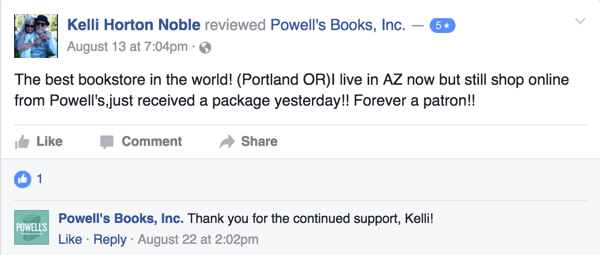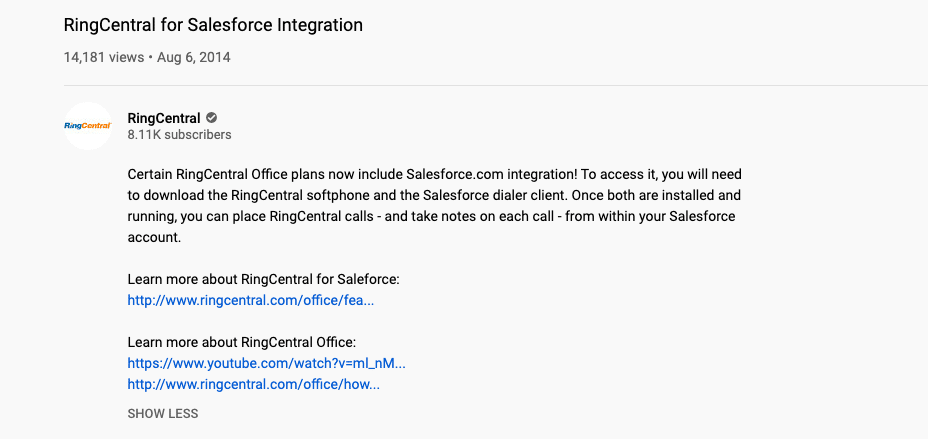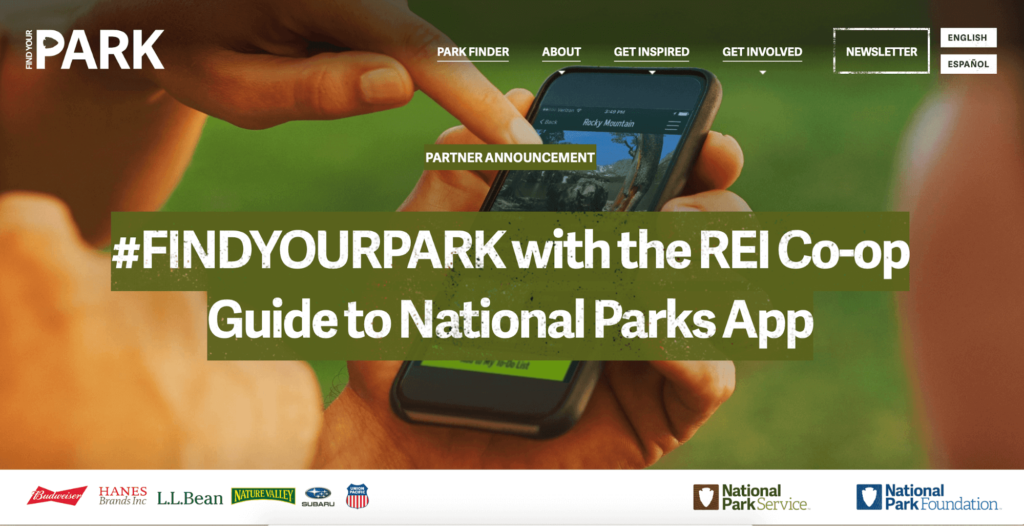Whether you just launched your business or are growing your business, one important must-do is to get new customers.
But no matter how great your product or service is, it’s the “getting yourself out there” part of the process that is often most difficult—especially when you have a limited budget and are pressed for ideas.
It’s not as if your potential customers don’t want your product or don’t trust your business. It’s just that they don’t even know you exist. And that’s where the biggest challenge lies.
But we don’t want to just attract new customers—you want to be able to keep them around too. That’s why we won’t be sharing tips that involve offering discounts or giving free stuff away. Being discount-focused is something that huge companies like Walmart can afford. But for small businesses, it’s not sustainable, and it’s not a particularly good way of getting an edge on competitors.
(And who’s to say your competitors won’t also try to compete on price when they see you offering discounts? If they do, then your business is back to square one—and in most cases, it quickly devolves into a race to the bottom).
So, how can small businesses like yours attract new customers, retain them, and make more money without getting drained dry?
Here are seven simple and surprisingly cheap ways to get new customers:
- Provide awesome customer service
- Get your customers to promote your business for you
- Dedicate half an hour each day to social media
- Publish videos to YouTube
- Do collabs with other brands
- Align your business to a mission
- Get yourself on the map
1. Provide awesome customer service
Key idea: Attract new customers by providing customer service that your existing customers will tell their friends and colleagues about.
One really commonly overlooked aspect of attracting new customers is actually not related to sales—or marketing—at all.
It’s your customer service.
Lucky for you, many businesses (and probably your competitors) tend to take a shortsighted view of customer service as it relates to attracting customers, preferring instead to focus on coming up with the next great Don-Draper-inspired ad campaign.
But your customer service is arguably one of the best (and least expensive) ways to spread positive word of mouth (which we’ll talk about in more detail later) and attract new customers. And the best part is, you’re not doing the selling and marketing—your happy customers are doing it for you:

(And if we’re being honest, those happy customers are probably going to be much more persuasive than you are when they’re telling their friends and colleagues about you. 😉 )
Which leads into our next tip…
2. Get your customers to promote your business for you
Key idea: Attract new customers by getting them to promote your brand directly to their community.
We put this after Tip #1, because in many ways, being able to do this step depends on your ability to do Tip #1 well first.
If you’re providing good customer service, then some of your customers might even be glad to do this for you without any incentive. But to give them that extra nudge, try a referral program.
It doesn’t have to be fancy, and you can customize it for your business by building tiers into the program.
For example, if a customer refers five people to purchase your product or service, then they get a Tier 3 reward. If they refer 10 people, maybe they hit Tier 2 and get a bigger reward. And so on.
The key to this, however, is to make sure your prizes are something people will actually want. If you run a coffee shop or bar, maybe it’s a free drink for a Tier 3 reward. Or even better, poll your customers to see what they’d like to see as rewards!
Or, get some extra juicy content out of this idea: poll your followers on social media too! This kind of poll could easily run for a few days on your Facebook or Instagram account, giving you some easy, low-effort ideas for content to post if you’ve hit a creative roadblock.
You’ve probably seen some companies do this—add a friendly request for a review to your receipts when customers purchase something. Some companies add this directly to the receipt, whether it’s a physical one or a receipt that’s attached to an email, while other businesses might have a sign at the cashier asking customers to leave a review on, say, Google.
3. Dedicate half an hour each day to social media
Key idea: Attract new customers through promoting your brand, tagging other businesses and people, and using hashtags to increase visibility of your posts.
Are you following social media best practices to make your business more visible? It’s one of the easiest ways to attract customers online.
It’s not enough to just have a Facebook, Twitter, and Instagram account set up.
You need to get more eyes on your profiles. One way is to create social media campaigns and nurture your audience by publishing valuable content to make the strategy work.
The more social media profiles your business has, the more important it is to make sure you’re staying consistent with your brand across all those channels, both in terms of the aesthetics of the images you’re posting and also the tone of voice you’re using.
For example, if your Instagram has a light-hearted tone, it might confuse your audience if your Facebook is really buttoned up.) It shouldn’t be a problem if one person is managing every social media profile, but it’s something to keep in mind.
While there are countless paid ad campaigns on social media you can try out, it’s better to master the basics and start small while you’re still in the process of growing your audience and prospects. (Learn more about the benefits of using social media here.)
You don’t have to be on every single social media platform! Here are some tips to help you decide which platform(s) you might want to focus on first:
- Facebook: Facebook is probably most helpful if you plan to reach a wider group of people or want to find your target audience.
- Instagram: If your product is really aesthetically pleasing, or you have a great designer or illustrator on your team, Instagram can be a great platform for showing off your brand.
- Twitter: We’d argue that Twitter isn’t really a must-have for smaller B2C businesses, and it can be a bit finicky, mainly because you have to schedule and publish posts frequently to keep things fresh. Unless you know that your audience is very active on Twitter, it may not be worth your time and resources.
- LinkedIn: If your company sells to other businesses (hello, B2B sales), LinkedIn is probably the most important social media platform for you to be on.
But what if you have to be on multiple social media platforms? How do you manage all those profiles and all those conversations with customers and prospects? This is where having some type of contact center solution would come in handy. For example, RingCentral Engage Digital™ consolidates all your social media platforms, across all your platforms in one place so that you can keep track of all your messages and even easily pick up on conversations that your teammates started:
For small businesses, having an active social media presence can be a good way to connect with potential customers. But don’t just use your social media profiles to post links to your website. Here are a few tips for using social media effectively:
- Find your target. Figure out who you’re trying to reach first. This will help you determine what kinds of content to post (and where to post them).
- Customize your content. People use different social media platforms differently. If you’re just copying and pasting the same content across social media channels, you run the risk of customers ignoring your content—or worse, unfollowing you. What’s the point of following you on Instagram and Facebook if you’re posting the same things on both?
- Engage with your existing customers. Social media isn’t just advertising. People use social media because they like to engage, whether that’s with their friends or your business. And the way you treat your existing customers on social media is public—for all your prospects to see. Prepare for feedback, both good and bad.
Customers who complain may not @ you directly. Use a social media CRM or some kind of tool that does social listening so that you can get notifications that people are mentioning you on social media—even if they don’t tag your brand.
4. Create videos and publish videos to YouTube (or build webinars)
Key idea: Attract new customers by promoting your videos to YouTube’s huge community and/or creating webinars on educational/interesting topics that would draw potential customers.
If your product or service is more complicated, videos are often a great way to show how it works in a more engaging and fun way than, say, making a prospect read an article.
YouTube’s suggested videos feature often serves up similar videos to people who are watching videos on a certain topic, which means that if you create a good variety of content related to your product or service, YouTube just might suggest your videos to those people—without you having to do anything.
Make sure to tag your videos properly and fill out all your metadata. This includes the video title, description, and tags—all of which are used to categorize your video and show it to people who are searching for topics related to your brand:

Alternatively, if you want to attract business customers, you might want to host a webinar. It’s a relatively cheap and efficient way of generating more leads, and eventually, customers and clients. Yes, YouTube videos are great, but sometimes your prospects might prefer to interact with a live person while they’re watching a video or presentation.
The neat thing about webinars is that they can be extremely interactive and robust, depending on how much effort you’re willing to put into them. Most importantly, they can provide you (or whoever’s hosting them) with detailed information about your attendees that can be later used for tracking and reporting.
That’s because people typically have to sign up for webinars by filling out a form on a landing page:
[screenshot example]
You can customize these forms to collect whatever information you want, but generally, businesses collect:
- Name
- Company name
- Some sort of contact info (phone number or work email address)
- Company size
Most webinar services, like the one RingCentral offers, deliver rich video and audio together with other useful functionalities like chat and screen sharing to help maximize productivity.
When you’re thinking about what fields to include in your webinar sign-up forms, consider the user experience for the people who are signing up. Some companies (understandably!) want to collect as much information as they can from webinar attendees, but filling out eight to 10 fields on a form might seem like too much work to some people, and you might get fewer form submissions (and webinar attendees) as a result. Choose wisely!
5. Do collabs with other brands in your space
Key idea: Attract new customers by building mutually beneficial relationships with other brands and promoting your brand to their audiences and customers
Of course, we’re not saying you should collaborate with a competitor.
However!
There are often many potential partners that may have a target audience that overlaps with yours. If you can do a little research and find these partners, you can build a mutually beneficial partnership and essentially amplify each of your audiences.
For example:
FreePeople is a clothing brand (you might have heard of them or seen their stuff at Urban Outfitters). They wanted to promote a new activewear line. So, they partnered with other health and wellness brands (that didn’t also sell clothes) for a giveaway*:

*Okay, we know we said “no giveaways,” but technically this tip is about collaborating with other brands, not giving away stuff. If you’ve got a perfect brand partner in mind and don’t want to do a giveaway, another idea is to simply promote your brands on each other’s social media channels or even start a mini-community of partner brands that you’re friendly with and regularly promote each other to your customers and audiences.
Bonus example!
This one is a little more complicated to pull off as it requires building an app, but we really like this collab between REI (an outdoor clothing brand aimed at campers) and the US National Parks Service:

They built an app to help their prospects and customers discover national parks near them, and of course, the US National Parks Service promoted this app on all of their social media channels too. (Not to mention a pretty sweet list of sponsors—check out the bottom of the page. ☝️)
6. Align your business to a mission
Key idea: Attract new customers who otherwise would not have heard of you if not for a clear and/or unique mission that your business has aligned itself with.
More and more, businesses are getting into the business of doing good—and seeing significant results for these endeavors. Companies that engage in corporate social responsibility (CSR) are getting noticed like never before.
Of course, this doesn’t work for every type of business, and it may not be relevant to yours.
But consumers are becoming more conscious of the environmental and social impact of their purchasing decisions, and if you can talk the talk and walk the walk, you can attract a swathe of super engaged—and super loyal—customers.
And if this all sounds too “pie in the sky” and unrealistic for you, just look around—tons of small businesses, from coffee shops to retail businesses, are taking notice.
Paper and metal straws over plastic ones.
Fair trade coffee beans.
Many companies can still get away with not taking part in the conversation, because let’s face it, it’s not an easy one to have, and these aren’t easy promises to deliver on when you’re trying to turn a profit.
But in the next few years, the question will become “Can you still afford to sit out on this conversation?”
If a consumer has a choice between running shoes that were made in a sweatshop under awful conditions and (the growing number of) brands that are known for paying their workers fairly and providing good working conditions—which will they choose?

A few years ago, the idea of social responsibility might have just been a trend. But consumers are the ones who choose where their dollars go—and going forward, it just might become a fundamental expectation.
Will you get ahead of this conversation?
7. Get yourself on the map
Key idea: Attract new customers in your immediate area by making sure your business is correctly tagged on third-party pages and websites.
Surprisingly, a lot of entrepreneurs are (still) neglecting the admittedly relatively small, but easily attainable benefits of getting themselves on the map.
It’s such an easy thing to do, and not doing it makes things so much harder for customers who want to find you—make sure that your business shows up on Yelp, Google Reviews, and Google Maps!
Why? Because a lot of customers use these places as a starting point for (what ultimately become) transactions.
But what if you think, “Ha, joke’s on you! My business doesn’t have a physical location.”
Okay, that may be true, but Google Reviews still exist for online-only businesses—and it’d be wise to optimize your website’s pages for searchers (with an emphasis on your target market’s locality to establish your local presence if you do have a physical store).
Get on Google My Business, verify your account, and fill out your profile information. (Include photos and videos if you can!) If customers have left you reviews, respond to them! Whether it’s a thank-you for a positive response or an apology and promise to follow up for a negative response, your future customers will check to see if your business takes care of its customers—and this is one easy way to show that you do.
Start attracting new customers to your business with these tips
You don’t have to just do giveaways and offer heavy discounts to get potential customers interested in your business!
There are so many ways to expand your audience and entice people to check you out, without spending a ton of money. Throwing money at a problem is easy. Sitting down and taking the time to put some thought into it is sometimes much harder.
But for small businesses especially, that’s where you can put the most separation between you and a bigger competitor. With a little time and strategy, you can start attracting new customers and build long-term relationships with them.
Originally published Sep 28, 2020, updated Jun 18, 2024





